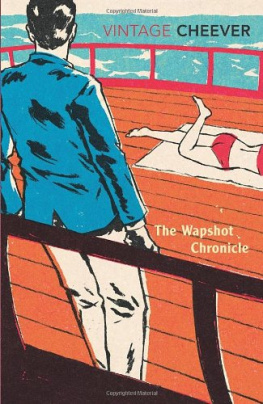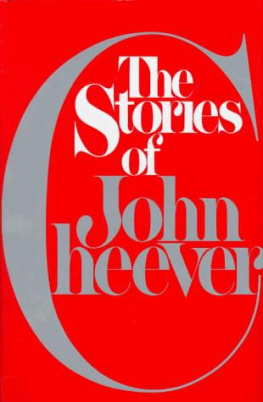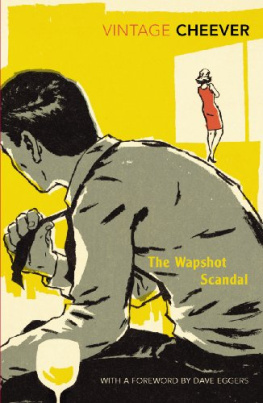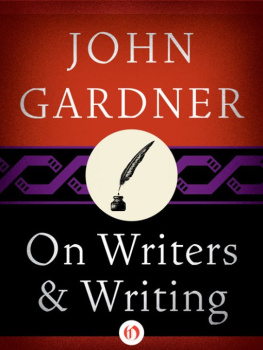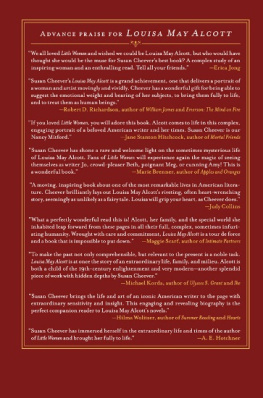Publishers Note
When this volume was first published in 1994, all thirteen stories remained uncollected. Recently, two of theseThe Autobiography of a Drummer and In Passinghave been included in a new collection of Cheever stories recently published by the Library of America.
This leaves our volume with eleven uncollected stories, and thus it remains the only source of these crucial early works.
For the sake of symmetry we have included the two stories mentioned above, so this new volume still contains the original thirteen stories.
Anita Miller
Jordan Miller
October, 2009
It is instructive and pleasurable to read an important writers formative work. These stories show the roots of Cheevers career and anticipate the fulfillment of his gifts. I am gratified that they are now conveniently available.
These stories are not literary curiosities; they are certainly worth rescuing from oblivion and worth republishing.
In particular, the stories written during the early Thirties have an objectivity of observation not always found in Depression fiction. They will stimulate Cheevers particular readership and will interest the celebrated mythical common reader.
Matthew Broccoli

Published in 1994 by
Academy Chicago Publishers
363 West Erie Street
Chicago, Illinois 60654
First paperback edition 2009
1994 Academy Chicago Publishers
Manufactured in the U.S.A.
All rights reserved.
No part of this book may be reproduced in any form without the express written permission of the publisher.
Library of Congress Cataloging-in-Publication Data on file with the publisher
I SBN 978-0-89733-596-6
Contents

Editors Note
I N 1979, The Stories of John Cheever received the Pulitzer Prize. To mark the publication of his omnibus, John Cheever wrote an elegant defense of the short story for Newsweek magazine. Why I Write Short Stories argued that the narrative velocity of the formits speed at rendering events and characterbest recorded the newness in our ways of life We are not a nomadic people, Cheever observed, but there is more than a hint of this in our great country so long as we are possessed by experience that is distinguished by its intensity and episodic nature, we will have the short story in our literature.
In that same article, John Cheever outlined a story using wryly observed elements of Cheever country. His suburbillusory rather than idealizedfeatured houses aping Elizabethan England and the antebellum south. Victorious domesticity ruled the scene. One lawn even displayed a No Smoking sign.
Nowhere in the Newsweek piece did Cheever mention the Depression era, foreclosures, race track touts, waitresses in diners, bleak boarding houses, or revolutionary radicalism. But, in one of American literatures best kept secrets, John Cheever had made such subjects his concern and written about them memorably.
Although devotees of Cheevers celebrated suburban fabulism may react initially as if the stories from the 30s and 40s are reports from a foreign land, critics have long known and admired them. Scott Donaldson, Cheevers biographer, comments on the range of characterization in these stories:
Time after time the economic crisis forces his characters to compromise their humanity and abandon their hopes. In evocations of the working class thought by latter-day critics to be beyond his ken, Cheever glimpsed the dreary and loveless lives of lunch-cart workers, striptease artists, and sailors down on their luck. More effectively his tales caught middle-class people trying to maintain their dignity in a time of diminished expectations.
James E. OHara says that Cheevers narrative
OHara ends his study by expressing the hope that the stories from the 30s and 40s
will become more available to students and the reading public If and when that occurs, these peoplethe thoughtful audience that Cheever increasingly cherished as he grew olderwill surely discover the full range of his storytelling abilities and his reputation as one of Americas best storytellers can only grow as a result.
Just as Cheevers celebrated novel Falconer plunged readers into the unexpected world of prison confinement, so many of the stories in this bakers dozen prove once again that Cheevers embrace of our intense and episodic experience is even more encompassing than we had thought.
Thirteen Uncollected Stories is arranged chronologically, and each story is annotated with the name and date of the publication in which it first appeared. The stories are reprinted exactly as they originally appeared, except that spellings and punctuation have been regularized in most cases.
Notes
Scott Donaldson, John Cheever: A Biography (New York: Random House, 1988), p. 62.
James Eugene O Hara, John Cheever: A Study of the Short Fiction (Boston: Twayne Publishers, 1989), pp. 9-13.
Ibid. p. 85.
Introduction
W HEN JOHN CHEEVER died in June 1982 at the age of seventy, his friend and fellow novelist John Updike composed a short, unsigned eulogy for The New Yorker magazine. Updike recalled that:
One could not be with John Cheever for more than five minutes without seeing stories take shape: past embarrassments worked up with wonderful rapidity into fables, present surroundings made to pulse with sympathetic magic as he glanced around him and drawled a few startlingly concentrated words in that mannerly, rapid voice of his.
This present collection of thirteen hitherto uncollected stories allows us to watch what Updike described: stories take shape. But not that only: to watch a career take shape as well. For these stories provide a synoptic glimpse of his formative years, those efforts (as he called them) to discover his singing voice, that assured, expansive, intensely personal style we associate with the mature Cheever of the 1950s and the 1960s.
With the exception of The Opportunity published in 1949, these stories date from 1931 (when Cheever was nineteen years old) up to 1942. Their settings and subject matter often correspond with his continual changes of residence during his impoverished Depression years. Thus we find three New England stories (Fall River, Late Gathering, Bock Beer and Bermuda Onions) that reflect memories of vacations he and his older brother Fred took to New Hampshire and Cape Cod in the late 1920s and early 1930s. Two (Autobiography of a Drummer and In Passing) recall memories of his visits home to Quincy, Massachusetts (a town near Boston, cf. The Teaser) during the mid-1930s. There he had discovered that his salesman father had been laid off, his parents marriage was crumbling fast, and the local bank was attempting to foreclose on the family home. From 1934 on (except for several months in 1939 when he stayed in Washington, D.C., working on WPA guidebooks), he lived in New York Cityfor a while in a dive near the Manhattan waterfront so dingy that the famous photographer Walker Evans immortalized its ambience in a photograph once featured in the Museum of Modern Art.
However, Cheever, an enthusiast for the outdoors and the perfumes of life, like sea water and the smoke of burning hemlock, was fortunate enough to escape the city for months at a time from 1934 on, after he applied and was accepted as a resident at Yaddo (where he became a favorite guest, owing to his wit and good manners). Frequent trips to the racetrack at Saratoga inspired three racetrack stories (His Young Wife, Saratoga, and The Man She Loved), all of which were published in


